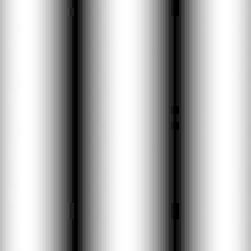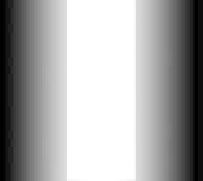Image Processing Reference
In-Depth Information
(a) A grayscale image
(b) Fuzzy boundary
(c) Rough
resemblance
FIGURE 3.1: Ambiguities in a grayscale image with sinusoidal gray value gradations in horizontal
direction
images due to fuzzy boundaries of various regions and rough resemblance of nearby gray
levels is studied and modeled in this chapter. Note that, the aforementioned ambiguities
are related to the indefiniteness in deciding an image pixel as white or black and hence they
can be collectively referred to as the grayness ambiguity (Pal, 1999).
Fuzzy set theory of Lofti Zadeh, is based on the concept of vague boundaries of sets in
the universe of discourse (Klir and Yuan, 2005). Rough set theory of Zdzislaw Pawlak, on
the otherhand, focuses on ambiguity in terms of limited discernibility of sets in the domain
of discourse (Pawlak, 1991). Therefore, fuzzy sets can be used to represent the grayness
ambiguity in images due to the vague definition of region boundaries (fuzzy boundaries)
and rough sets can be used to represent the grayness ambiguity due to the indiscernibility
between individual or groups of gray levels (rough resemblance).
Rough set theory, which was initially developed considering crisp equivalence approx-
imation spaces (Pawlak, 1991), has been generalized by considering fuzzy (Dubois and
Prade, 1990, 1992; Thiele, 1998) and tolerance (Skowron and Stepaniuk, 1996) approxima-
tion spaces. Furthermore, rough set theory, which was initially developed to approximate
crisp sets, has also been generalized to approximate fuzzy sets (Dubois and Prade, 1990,
1992; Thiele, 1998).
In this chapter, we propose the use of the rough set theory and its certain generalizations
to quantify grayness ambiguity in images. Here the generalizations to rough set theory based
on the approximation of crisp and fuzzy sets considering crisp equivalence, fuzzy equiva-
lence, crisp tolerance and fuzzy tolerance approximation spaces in different combinations
are studied. All these combinations give rise to different concepts for modeling vagueness,
which can be quantified using the roughness measure (Pawlak, 1991).
We propose classes of entropy measures which use the roughness measures obtained con-
sidering the aforementioned various concepts for modeling vagueness. We perform rigorous
theoretical analysis of the proposed entropy measures and provide some properties which
they satisfy. We then use the proposed entropy measures to quantify grayness ambiguity in
images, giving an account of the manner in which the grayness ambiguity is captured. We
show that the aforesaid generalizations to rough set theory regarding the approximation of
fuzzy sets can be used to quantify grayness ambiguity due to both fuzzy boundaries and
rough resemblance.
We then propose an image thresholding methodology that employs grayness ambiguity





Search WWH ::

Custom Search